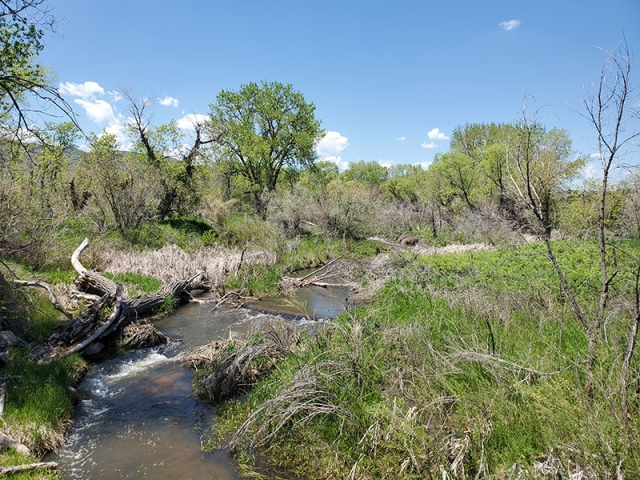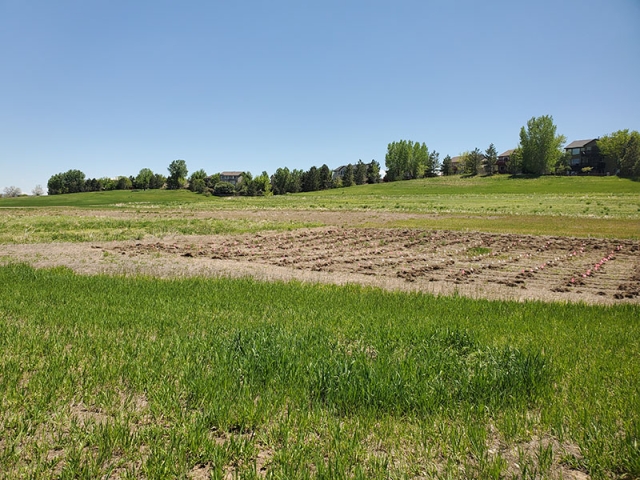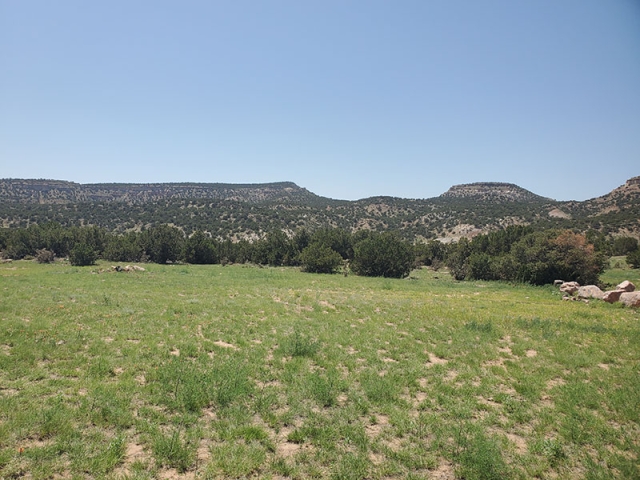Supporting the UN Decade on Ecosystem Restoration
As we begin the UN Decade on Ecosystem Restoration, we are doing our part to help restore our creek and meadow habitats at Chatfield Farms and work to develop better practices for restoration. Our riparian restoration project started in 2016. Onsite beavers are restoring part of the property and we are mimicking their work on areas where they aren’t active. We have successfully restored three historical oxbows (creek meanders) to their original flow and have seen ducks and other waterfowl taking advantage of this expanded habitat. We have planted 2,725 willow stakes throughout the creek restoration area. We continue to conduct annual monitoring along the creek to track the progress of this project.

Creek restoration site at Chatfield Farms
This year has been a wet one along the front range, and we have seen some impressive gains on this project. Not only are our three in-stream structures still functioning, but we are starting to see continued improvement of riparian habitats in both the restoration and active beaver areas.

Beaver habitat at Chatfield Farms
While we have been working on the restoration of Deer Creek and its riparian habitats, we have also been working in small and big ways to restore the hundreds of acres of grassland habitat at Chatfield Farms. Some of this work has been ongoing by Chatfield staff for many years, working to clear non-native grass areas with burning and spraying followed by seeding with different mixes of native grasses and forbs.

Grassland restoration site at Chatfield Farms
We also started a partnership with external colleagues in 2018 to expand our grassland restoration work. These researchers are testing different management treatments (e.g., tilling and herbicide intensity), seed mixtures and seed treatments to better understand the most efficient ways to get rid of non-native grasses (in our case, mostly smooth brome, Bromus inermis), help with seed establishment and create a diverse plant community. It is definitely a challenge to work with difficult soils and dry conditions but a challenge we are hoping to overcome through partnerships that bring together a diverse range of knowledge and experience.

Grassland restoration site at Chatfield Farms
We have been fortunate to have four graduate students and several undergraduate and high school students working with us on these projects. These students have been exploring a range of research topics including the impact native plant competition has on an invasive grass, the role of seed source in the performance of restoration species, riparian plant community response to restoration and the impact of grassland restoration methods on pollinator habitat. In addition, we are working with the Bureau of Land Management to expand our research on federal lands. As part of the Chatfield Master Development Plan, we hope to continue to expand our restoration work, continuing to not only improve habitats we manage but also serve as a demonstration site for restoration methods at a larger scale.
Add new comment